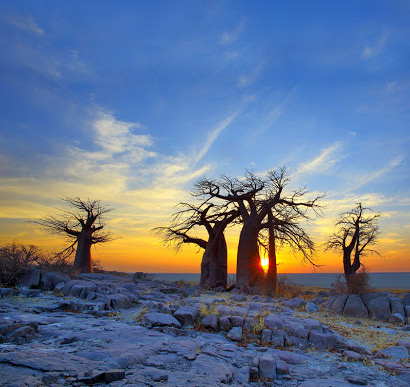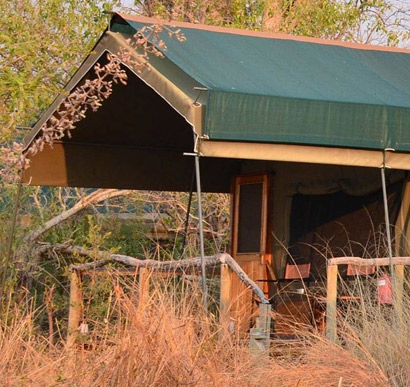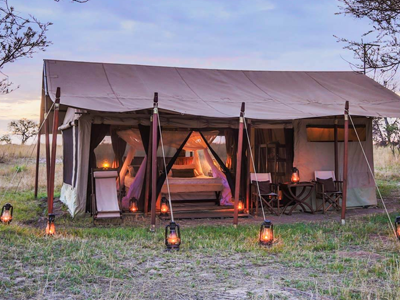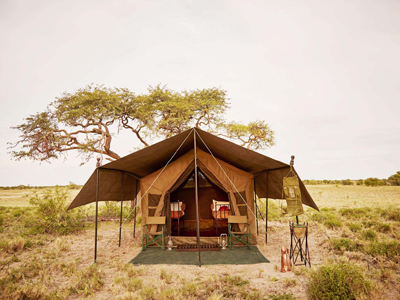The Okavango Delta is a unique pulsing wetland. More correctly an alluvial fan, the delta covers between 6 and 15 000 square kilometres of Kalahari Desert in northern Botswana and owes its existence to the Okavango (Kavango) River which flows from the Angolan highlands, across Namibia’s Caprivi Strip and into the harsh Kalahari Desert.
Discover the iconic Okavango Delta
Explore the Okavango Delta by mokoro or motorised boat cruises (seasonal)*, on foot or on game drive. A maze of sparkling lagoons, meandering channels and overgrown islands teeming with wildlife, Botswana’s Okavango Delta lies like a sparkling jewel at the heart of the Kalahari Desert.
Known as “the river that never finds the sea”, crystal clear channels spread over the thirstlands of the Kalahari with their papyrus-fringed banks and fertile floating islands.
Adapted for a life in and out of water, the elegant red lechwe and shy sitatunga are found in this watery wilderness. Lion, cheetah, leopard and African wild dog share the floodplains with large herds of elephant and buffalo. Each year the Okavango River discharges approximately 11 cubic kilometres (1.1 × 10¹³ litres) of water into the Okavango Delta. Most of this water is lost to transpiration by plants (60%) and by evaporation (36%) with only 2% percolating into the aquifer system with the remainder finally flowing into Lake Ngami.
The Okavango Delta is affected by seasonal flooding with flood water from Angola reaching the Delta between March and June, peaking in July. This peak coincides with Botswana’s dry season resulting in great migrations of plains game from the dry hinterland. Generally flat, with a height variation of less than two meters across its area, dry land in the Okavango Delta is predominantly comprised of numerous small islands, formed when vegetation takes root on termite mounds, however larger islands exist with Chief’s Island, the largest, having been formed on a tectonic fault line.
The 1000th site to be inscribed on UNESCO’s World Heritage List in 2014, the Okavango Delta is an important wildlife area protected by both the Moremi Game Reserve, on its eastern edge, and the numerous wildlife concessions within Ngamiland.
An oasis in an otherwise dry environment the Okavango Delta is known for its superb wildlife, with large populations of mammals and excellent birding particularly in the breeding season.
Very much at the centre of Botswana’s safari industry, the Okavango Delta features some of Africa’s premier camps and lodges including Mombo Camp, operated by Wilderness Safaris and Kanana, operated by Ker & Downey Botswana.





































